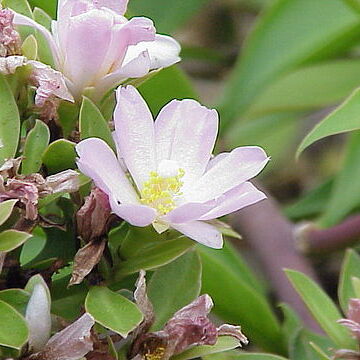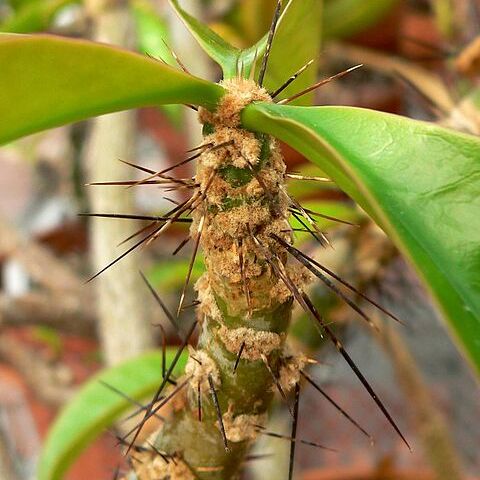Shrubs or climbers, or trees to 20 m tall. Branches terete, slightly fleshy when young; areoles with spines; glochids absent. Leaves somewhat fleshy, sessile or petiolate, broad, flat, pinnately veined, estipulate. Flowers solitary, or in fasciculate, subcorymbose, racemose or paniculate inflorescences, stalked or sessile. Receptacle not produced into a tube beyond ovary, with numerous, ± leafy, often persistent scales. Perianth multiseriate; segments free, spreading or rotate, white to red, magenta or orange. Stamens numerous, inserted at base of perianth. Ovary (pericarpel) superior to inferior; placentas basal or parietal. Fruit globose, pear-shaped, or obovoid, fleshy, with or without scattered, leaflike scales. Seeds 2 to numerous; testa glossy black, brittle.
Leafy trees or shrubs, sometimes clambering; stems terete, branching, succulent above, woody below, armed with stout spines in minutely pubescent axillary areoles. Leaves alternate, spiral, broadly laminate, deciduous. Flowers pedunculate, panicu-late or solitary, both terminal and axillary; perianth rotate, with many free or slightly united segments, the outer somewhat shorter and less petaloid than the inner; stamens numerous, inserted in a shallow tube adnate to the base of the perianth. Ovary subinferior. Fruit a fleshy relatively few-seeded berry bearing the marcescent remains of the perianth.
Stems straight or zig-zag. Spines 1-12 per areole. Flowers from areoles of new growth, fragrant or not; outer tepals often greenish, colored near margins; inner tepals white, yellow, orange-red, red, pink to purplish; stamens 50-100 in small-flowered species, to 300 in large-flowered species; filaments colorless near base, in some species pigmented distally, color either matching inner tepals or contrasting with them; styles shorter to longer than stamens; stigma lobes 3-20. x = 11.


